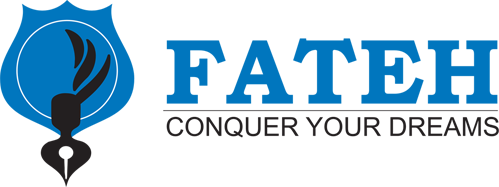Introduction
Understanding the Process
Before diving into the documents required for education loan, it helps to grasp how the entire process unfolds. Funding your international education with a loan isn’t a simple checklist—it’s a structured path with multiple milestones, each demanding careful preparation and the necessary documents. Every stage plays a crucial role in ensuring your journey toward global learning is smooth and successful.
It begins with research and shortlisting — identifying the loan providers that align with your needs. Whether it’s a government bank, private lender or an international funding platform, each one has different eligibility criteria, interest rates and collateral requirements. At this stage, students should compare options based on factors like moratorium periods, repayment terms and currency of disbursement.
Next comes the loan application. This is where you formally express your interest and submit initial details such as the course, university, estimated expenses and your financial background. Once the lender receives the application, they initiate a credit assessment, analysing both the student’s academic profile and the co-applicant’s financial strength. The core documentation begins to play a vital role here.
If the lender is satisfied, a sanction letter is issued. This outlines the approved loan amount, interest rate and other terms. It’s followed by a loan agreement signing and finally, the disbursement phase — when funds are either transferred directly to the university or released in instalments based on fee schedules.
Understanding this sequence prepares students and families to gather the right documents at each step, not just to apply, but to apply confidently and correctly.
Pre-Sanction Documents
The pre-sanction stage is when lenders evaluate whether you and your co-applicant, if any, meet the criteria for an education loan. This is where the paperwork begins to build. Submitting the right documents early on speeds up the process and shows lenders you’re well prepared.
At this point, the documents required for education loan generally fall under four main categories: identity proof, address proof, academic records and financial documents. You’ll need a valid passport, Aadhaar card or PAN card as ID, along with recent utility bills or a rental agreement as proof of residence.
On the academic front, lenders usually ask for mark sheets from Class 10 onwards, entrance test scores (if applicable) and a confirmed admission letter from the overseas university. This helps them assess your academic intent and eligibility.
Financially, your co-applicant — usually a parent or guardian — must provide income proof through salary slips, bank statements and IT returns. For self-employed guarantors, business income documents may be needed.
Getting these documents in order at the pre-sanction stage sets the foundation for a smoother journey ahead, ensuring there are no last-minute hiccups when your loan is under review.
Post-Sanction Requirements
Once your education loan is sanctioned, the finish line might seem close — but there’s still a bit of paperwork to tackle before the funds are released. At this point, lenders require a more detailed view of your academic and financial plan, so being organised is key.
The documents required for education loan in the post-sanction stage begin with your official admission letter from the university. This must clearly mention your course details, duration and tuition structure. Alongside this, you’ll need to provide a breakdown of the total cost of education, covering tuition, living expenses, travel and any additional academic costs such as lab fees or insurance.
For collateral-based loans, you’ll be asked to submit property documents — such as ownership proof, valuation reports and encumbrance certificates — depending on the type of asset being pledged. If the loan is unsecured, the financial vetting of your co-applicant becomes more detailed at this stage.
You may also need to submit a signed loan agreement, disbursement request form and your visa copy, once approved. Providing these documents on time helps avoid delays and ensures your university receives the first instalment well before the payment deadline.
Co-Applicant and Guarantor Details
When it comes to applying for an education loan, lenders rarely base their decision on the student’s profile alone — especially if the applicant has limited or no income. That’s where co-applicants and guarantors come in, offering financial backing and added credibility to the loan application.
A co-applicant is typically a parent, sibling or spouse who shares the responsibility of repaying the loan. Their income, assets and credit history are closely examined by the lender, as it’s their financial stability that reassures the bank. The documents required for education loan in this case include the co-applicant’s ID and address proofs, salary slips, income tax returns and recent bank statements.
A guarantor, though not always mandatory, is someone who assures the lender that they will step in if the borrower or co-applicant defaults. Guarantors are usually required for higher loan amounts or in unsecured loan cases. Their documentation is similar, focusing on income, property details and a written guarantee.
It’s important that both co-applicants and guarantors understand their legal and financial responsibilities. Their involvement isn’t just symbolic — it plays a central role in how smoothly the loan is processed, sanctioned and eventually repaid.
Security Documents
If you’re opting for a secured education loan, you’ll need to offer collateral — and that means preparing a fresh set of documents to prove its value and legality. These security documents help lenders assess the risk they’re taking and form the basis of the loan amount they’re willing to sanction.
Collateral can include residential or commercial property, fixed deposits or insurance policies. For property-based security, the documents required for education loan include ownership deeds, recent property tax receipts, sanctioned building plans and encumbrance certificates. Lenders may also ask for a legal opinion and valuation report from approved professionals to ensure everything checks out.
If you’re pledging a fixed deposit, you’ll need to provide the deposit certificate, along with a lien letter authorising the lender to hold the FD until the loan is repaid. In cases where cross-collateralisation is involved — such as using the same property for multiple loans — you must disclose details of any existing loans tied to that asset.
Providing accurate and complete security documentation not only smoothens the approval process but also strengthens your case for a higher loan amount with better terms. A little attention to detail here can go a long way.
Conclusion
Securing an education loan is a major milestone in your study abroad journey — and having the right documents in place can make all the difference. From identity proofs and academic records to co-applicant details and collateral papers, each document plays a vital role in shaping your loan application and speeding up approvals.
It’s perfectly normal to feel overwhelmed by the paperwork, especially when planning for countries like the UK, Ireland or Dubai. That’s why having a trusted guide by your side can ease the pressure.
At Fateh Education, we don’t just help you get into top universities — we also walk you through the financial side of things. Our experts can help you understand lender requirements, organise your documentation and avoid common mistakes.
If you’re ready to take the next step with confidence, reach out to us today. We’ll help you turn your global education dream into reality — one document at a time.
FAQs About Education Loan Documentation
Yes, it's possible — but only with the right support system in place. Most lenders require income proof to assess repayment ability. If you, as the student, don’t have income proof, a financially stable co-applicant becomes essential. Their salary slips, bank statements and ITRs serve as the financial backbone of your application. In the absence of both student and co-applicant income proof, your chances improve if you offer strong collateral security instead.
Property documents are required only if you're applying for a secured education loan, where real estate is pledged as collateral. You’ll need to submit ownership deeds, tax receipts, building approval plans, and sometimes legal and valuation reports. For unsecured loans, property documents are not needed — though the lender may ask for other financial proofs from your co-applicant.
Yes, Income Tax Returns (ITRs) are commonly required — usually for the co-applicant. Lenders use ITRs to assess financial stability and repayment ability. For salaried co-applicants, ITRs from the past 2–3 years are typically asked for. In some cases, bank statements and salary slips may also suffice, depending on the lender's policies and whether the loan is secured or unsecured.
Yes, many private lenders and NBFCs do offer unsecured loans up to ₹20 lakh — especially for students admitted to reputed universities in countries like the UK or Ireland. However, approval largely depends on your academic profile, admission offer and your co-applicant’s creditworthiness and income. If your co-applicant has a strong financial standing and a good credit history, you may not need to pledge collateral for loans in this range.


